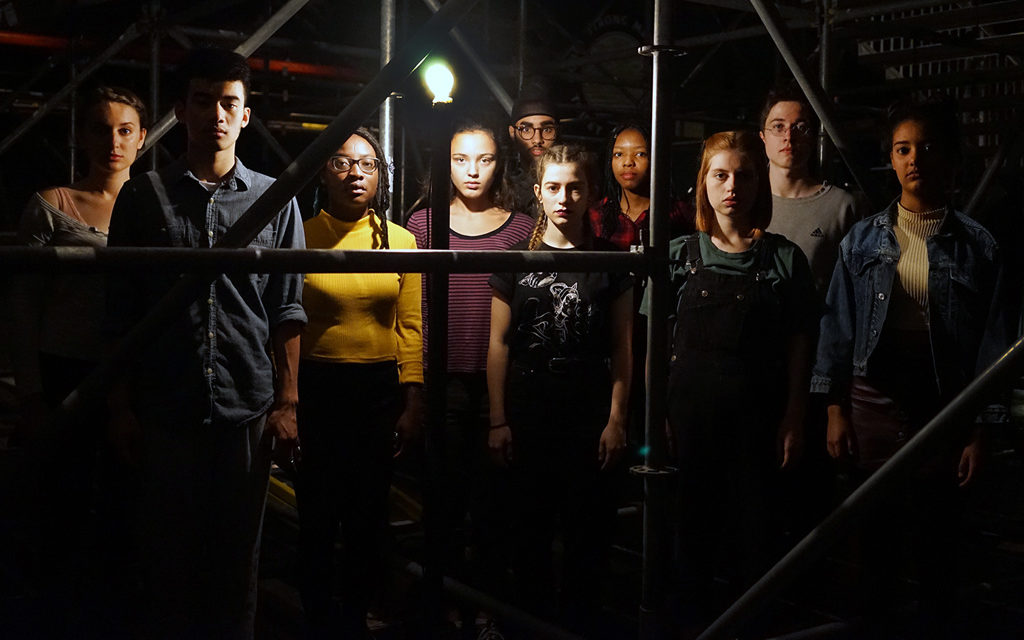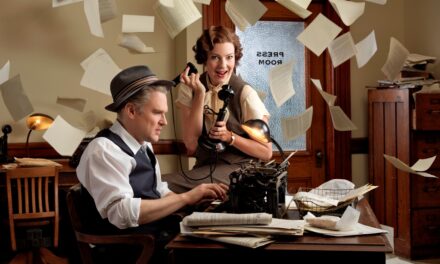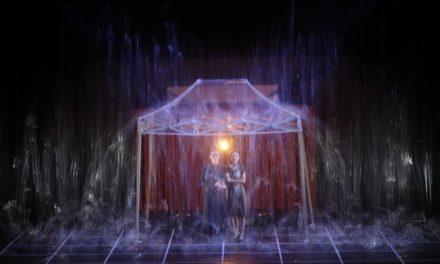Concord Floral opened the 2016-2017 Canadian Stage season, yes, the same season whose programming announcement in January 2016 garnered it the hashtag #CanStageSoWhite. Concord Floral does not redress the absence of people of colour in the key roles of playwright or director. But might it nevertheless engage with the question of diverse representation in creating a space for teenage voices? If so, in what way, and to what extent, does it “give voice” to the teenagers it portrays?
The piece is a Brubacher/Spooner/Tannahill production, presented by CanStage. It had its premier at Toronto’s Theatre Centre in 2014 and earned its playwright, Jordan Tannahill, the Dora Award for ‘Outstanding New Play’ in 2015. Notably, in the program’s Directors’ note, Erin Brubacher and Cara Spooner write that the play “came into being over a three-year development process that we shared with Jordan Tannahill and a total of 21 Toronto teenagers” and that its premiere production included “the cast with whom we had made it.” Concord Floral is, according to Tannahill’s program note, “a kind of fantastical portrait of my own suburban adolescence, informed by the adolescent experiences of both my collaborators, Erin Brubacher and Cara Spooner, and the teenagers we worked with.”
Billed by CanStage as a “gothic suburban thriller,” Concord Floral stages the story of a group of teenagers who “must flee a plague they have brought upon themselves” (Program Synopsis). The teenage characters’ text is written in the style of documentary or verbatim, with each verbalizing what appear as colloquial, uncensored snippets of personal reflection. Strongest amongst these are candid revelations of teen sexual discovery and suicidal ideation. This has earned the show much acclaim for staging the struggles of teenage experience. But how does that translate to the socio-political implication of “giving voice” to contemporary teenagers in and through their theatrical representation?
Most readily, the play is performed by a cast of teenage actors, one that includes women and people of colour. As Laura Levin remarks in her introduction to the published script, “the choice to cast teenage actors in teenage roles [is] a directorial move too rarely seen in the theatre.” The production history of the piece reveals that it not only hires teenage performers, it also develops working relationships across its productions by rehiring many of its actors as well as involving teenagers in the production crew.
In the current production, five actors were also part of the inaugural 2014 cast, and three other actors performed in the play’s production at the National Arts Centre earlier this year. As Karen Fricker notes, one may “consider them the Concord Floral all-stars.” Moreover, Erum Khan, who premiered the role of Nearly Wild in the inaugural 2014 production, is the Assistant Director on the current production; and Mick Robertson, who has previously served as the Assistant Stage Manager on the inaugural production, as well as the Youth Consultant for the National Arts Centre production, performs in this iteration of the show. As Levin notes, “the agency given to young performers in this project” is mapped across their involvement not only as cast but also because “they helped to workshop the play, direct their photo portraits [for the accompanying lobby photo exhibit This Is My Room. Look.], and lead post-show Q&As.” This production history shows that teenagers are granted a great deal of agency as artists in this production, while not implying that Concord Floral serves as a performance platform for the teenagers’ specific concerns.
Yet the aesthetic of Concord Floral plays across the conflation of the bodies of its performers with those of its characters. The play’s aesthetic style of docu-drama is underscored through the casting of teenage actors, many of whom lack “the polish” of formal training. As a result the actors are perceived as amateur bodies and thus have been variably read as “honest” (Fricker) and as “teenagers play[ing] themselves” (Levin). This opens up an ambiguity between these bodies as at once embodying their own actual teenagehood, and this specific, fictional iteration of teenage experience. The piece clearly capitalizes on this blurring of real teenage embodiment and fictional text. As J. Kelly Nestruck described in his review of the inaugural production, “the roughness of these see-through performances is part of the appeal […] The authentic phenomenology results in a deeper creepiness familiar from fake found-footage horror movies.”
But, as Nestruck notes in his most recent review, “Concord Floral was not written by teens, although it presents itself as if it were.” Indeed, the teenagers are not playing themselves, and, while their performances may read as “unpolished,” they are still acting. For me, this distinction is a significant one because it resists assuming that the diversity in casting equates to diversity in the piece’s content: in Concord Floral the bodies onstage are not necessarily telling their own stories. Seemingly in response, directors Brubacher and Spooner posit that “we are perpetually reminded of the alchemy of this text and teenage voices: we watch our younger co-conspirators light-up as the words leave their lips, as they listen to a story they can claim as their own and offer back to us.”
I find Concord Floral to be a breath of fresh air as part of CanStage’s programming. It is a strong piece of theatre, carefully crafted across text, sound and light design, and well executed by its performers. I am very glad that Artistic Director Matthew Jocelyn welcomed the production of Concord Floral and granted it—and its cast of diverse teenagers—the rite of “graduating to our main stage” (Artistic Director’s Note). Yet the show compels me to ask when CanStage itself will graduate to greater equity in representation.
Additional Works Cited
Concord Floral program. Canadian Stage, Bluma Appel Theatre, September-October 2016.
Levin, Laura. “Introduction.” CTR, vol.163, Summer 2015, p.66.
This article was originally published on Alt.theatre. Reposted with permission. Read the original article.
This post was written by the author in their personal capacity.The opinions expressed in this article are the author’s own and do not reflect the view of The Theatre Times, their staff or collaborators.
This post was written by Shelley Liebembuk.
The views expressed here belong to the author and do not necessarily reflect our views and opinions.


















